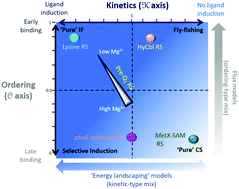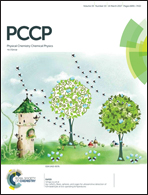An integrated perspective on RNA aptamer ligand-recognition models: clearing muddy waters
Abstract
Riboswitches are short RNA motifs that sensitively and selectively bind cognate ligands to modulate gene expression. Like protein receptor–ligand pairs, their binding dynamics are traditionally categorized as following one of two paradigmatic mechanisms: conformational selection and induced fit. In conformational selection, ligand binding stabilizes a particular state already present in the receptor's dynamic ensemble. In induced fit, ligand–receptor interactions enable the system to overcome the energetic barrier into a previously inaccessible state. In this article, we question whether a polarized division of RNA binding mechanisms truly meets the conceptual needs of the field. We will review the history behind this classification of RNA–ligand interactions, and the way induced fit in particular has been rehabilitated by single-molecule studies of RNA aptamers. We will highlight several recent results from single-molecule experimental studies of riboswitches that reveal gaps or even contradictions between common definitions of the two terms, and we will conclude by proposing a more robust framework that considers the range of RNA behaviors unveiled in recent years as a reality to be described, rather than an increasingly unwieldy set of exceptions to the traditional models.

- This article is part of the themed collection: PCCP Perspectives


 Please wait while we load your content...
Please wait while we load your content...